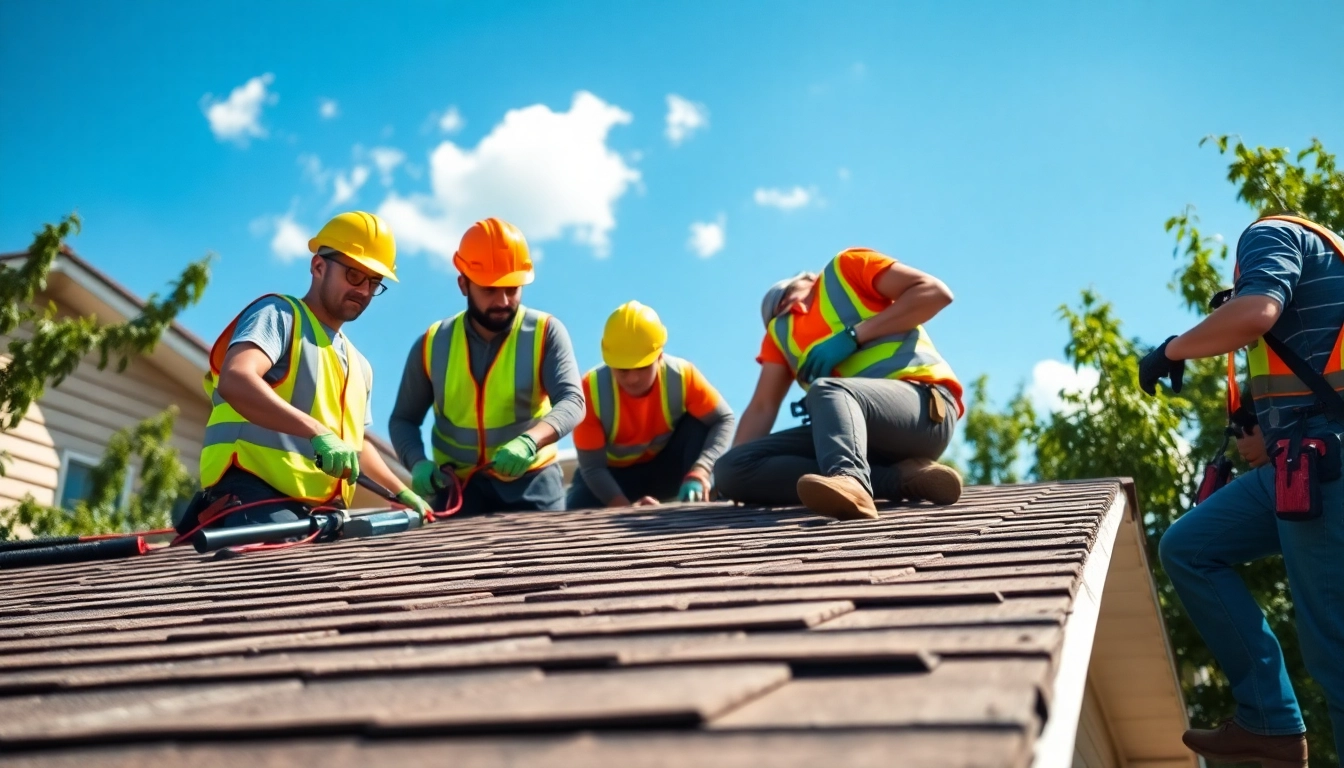
Understanding Emergency Roof Repair in Texas
When it comes to maintaining your home, the roof is one of the most critical components to consider. In Texas, the severity of weather conditions varies significantly, making emergency roof repair Texas a vital service for homeowners. Engaging with qualified roofing professionals can mean the difference between a simple repair and a major roofing overhaul.
What Constitutes a Roofing Emergency?
A roofing emergency typically involves unexpected and immediate issues that threaten the integrity of the home. This can range from severe leaks due to heavy rainfall to storm damage resulting from strong winds or hail. Finding structural compromise, such as sagging or punctured roofs, also qualifies as an emergency. Ultimately, a roofing emergency occurs when the damage poses a risk to your safety or property integrity.
Common Causes of Emergency Roof Situations
Roof emergencies can arise from multiple situations. Common causes include:
- Severe Weather: Texas is prone to tornadoes, thunderstorms, and hail storms, which can inflict direct damage on roofing.
- Neglected Maintenance: Over time, lack of inspection and maintenance can lead to undetected issues such as rot, leaks, and material degradation.
- Animals: Small animals can compromise a roof’s structural integrity if they take up residence in or damage roofing materials.
- Tree Damage: Falling branches during high winds or storms can puncture roofing materials, leading to leaks.
Impact of Texas Weather on Roof Integrity
The unpredictable nature of Texas weather can put roofs at significant risk. Hot summers lead to thermal expansion while cold winters cause contraction, which can weaken roofing materials over time. Additionally, frequent storms and occasional hurricanes deliver heavy rainfalls capable of overwhelming drainage systems, leading to extensive water damage if not addressed swiftly.
Signs You Need Emergency Roof Repairs
Identifying the early indicators of roof issues can prevent emergencies from escalating. Becoming familiar with the signs can help maintain your roof’s integrity and functionality.
Identifying Roof Leaks and Structural Damage
Leaking roofs are one of the most significant warning signs. Look for:
- Water stains or discoloration on ceilings and walls.
- Visible mold or mildew growth.
- Sagging roof deck or ceiling—this could indicate serious structural damage.
- Loose or missing shingles that allow for water penetration.
Other Warning Signs: Debris and Wear
Besides leaks, keep an eye out for:
- Debris accumulation that can trap water or obstruct drainage channels.
- Crumbling or peeling shingles which signal wear and tear.
- Rusty or damaged gutters that can lead to overflow and roof damage.
When to Call for Professional Help
If you notice any of the aforementioned signs, especially leaks, it’s essential to contact a professional immediately. If the damage is extensive, you might also want to consult a roofing expert for a thorough inspection even if there are no visible signs.
Your Immediate Response Plan
When faced with a roofing emergency, a composed approach is crucial. Knowing what to do can significantly mitigate risks.
Steps to Take After a Roof Emergency Occurs
Following a roofing emergency, consider these steps:
- Assess the situation safely—avoid standing under any compromised structure.
- Document the damage with photos for insurance purposes.
- Locate and shut off utilities if water is leaking into the system.
- Contact a roofing professional.
Temporary Measures to Protect Your Home
In some cases, you’ll need to take temporary measures until professionals arrive:
- Use tarps to cover exposed areas if safe to do so.
- Move personal property out of the way to prevent further damage.
Gathering Essential Information for the Repair Team
Before the professionals arrive, gather all relevant information:
- Document the incident’s timeline.
- Collect photos of the damage.
- Compile any prior maintenance records or inspections.
- Have your insurance policy available to discuss coverage.
Choosing the Right Emergency Roofing Service
When searching for a reliable roofing contractor during an emergency, perform due diligence to ensure you hire the right team to restore your roof.
Key Questions to Ask Before Hiring
Before hiring a contractor, ask these important questions:
- What is your response time for emergencies?
- Are you licensed and insured?
- Can you provide references from previous customers?
- What warranties do you offer on repairs?
Evaluating Credentials and Experience
Check online reviews, ratings, and certifications. A contractor with a solid track record will demonstrate reliability and expertise, making them preferable for handling emergencies efficiently.
Understanding Service Costs and Insurance Claims
Discussing the cost of repairs upfront is critical. Understanding what your insurance covers can also alleviate potential financial stress when dealing with emergencies. Ensure to get a detailed estimate and discuss the claims process with your insurer and contractor.
Post-Repair: Ensuring Long-Term Roof Health
After addressing the emergency, maintaining your roof is vital for longevity and performance.
Regular Maintenance Tips to Prevent Future Emergencies
To safeguard against future issues:
- Schedule regular inspections twice a year—preferably in spring and fall.
- Keep gutters clean to ensure proper drainage.
- Trim nearby trees to avoid falling branches.
Monitoring Environmental Factors in Texas
Remain vigilant about your roof’s exposure to Texas weather. Be proactive about addressing any visible wear that could become problematic with seasonal changes.
What to Expect After the Repair: Warranties and Follow-Ups
Understand the warranty for the repairs completed and inquire about follow-up inspections. Most reputable contractors will provide a warranty and recommend a check-up after significant repairs.